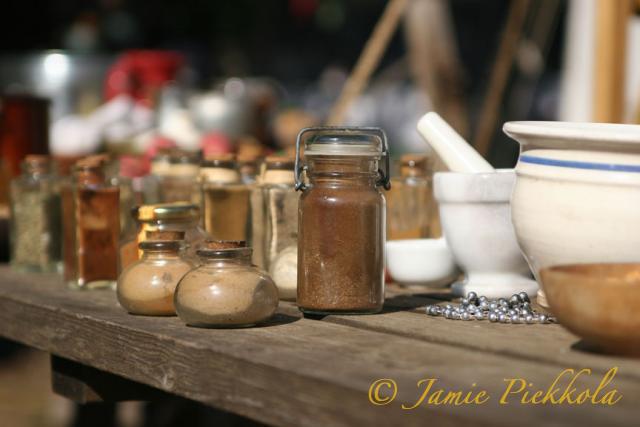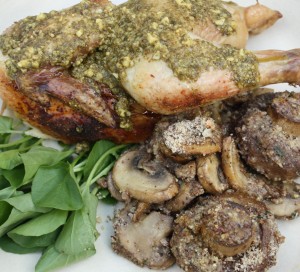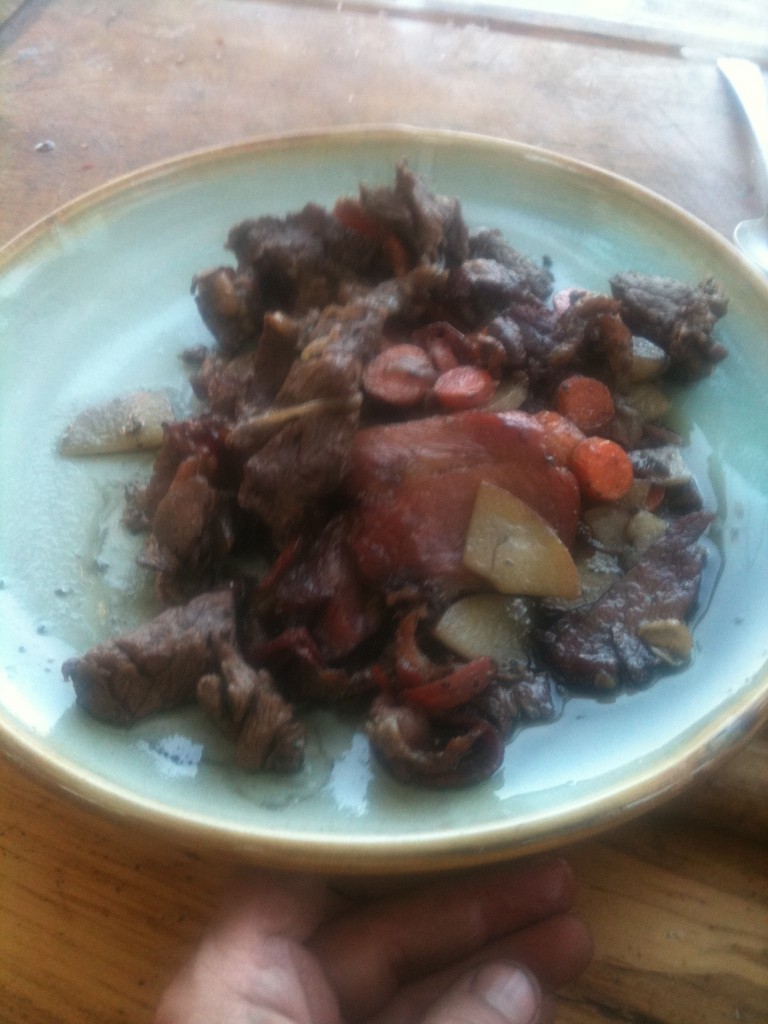This past year, my assistants and I experimented with a variety of recipes. During chocolate and romance weekend, we developed a recipe using chocolate. We researched various recipes using the new world ingredient – chocolate – and this is what we came up- with. It was a delightful dish with a unique flavor, similar to mole.
Ingredients
1 whole chicken, cut up
3 tablespoons vegetable oil
2 cups chicken stock
1/2 cup unsweetened cocoa powder
1 1/2 tablespoon vegetable oil
1/4 teaspoon cloves
1/2 teaspoon cinnamon
3/4 teaspoon anise seed
1 cup almonds or hazelnuts, chopped
1.5 tablespoon sugar
1 teaspoon salt
3 tomatoes, chopped (optional)
2 medium onions, chopped
1/2 teaspoon fresh black pepper
1/8 teaspoon ancho powder (to taste)
sesame seeds
Preparation
Brown chicken in a medium skillet in hot oil. Remove to a large (13x9x2) cake pan or baking dish. Pour oil from skillet and add the stock. Simmer 5 minutes. Mix cocoa with vegetable oil to form a paste. Add cloves, cinnamon, anise seed, and blend. Stir spice mixture into simmering stock and simmer 5 minutes more, stirring occasionally.
Pour mixture over the chicken parts. Cover and bake in preheated 350-degree oven until chicken is tender (around 1 to 1 1/2 hours).



